Rapidly advancing technology and a growing market for outpatient services are transforming healthcare.
With these changes, from telehealth to the rise of community-based services, healthcare delivery is no longer limited to the traditional hospital walls. We reached out to five leaders in healthcare facilities, design, architecture, and real estate with the question:
“How will this transformation impact real estate & facilities in the next decade and beyond?”
Here’s what they had to say…

Jeff Land, Senior Vice President of Corporate Real Estate at Dignity Health
- Decentralized locations will pick up steam
- Patients will continue demanding more compassionate care environments
- Tech will fundamentally change what/how we build
- Healthcare real estate professionals are in a prime position to influence patient outcomes
Perhaps now more than any other time, fluctuations in how healthcare is delivered is forcing rapid changes to the built environments where it is delivered. In fact, there are good reasons to believe that healthcare will soon be less anchored to a location than ever before.
Compassionate Environments
Our patients and staff all deserve and are demanding more compassionate places to recover or to work. At Dignity Health we call this approach ‘Humankindness,’ and we have been reshaping the look and feel of our care environments to match this approach.
Everything from creating and installing positive distractions-- such as wellness walls and artwork-- to improving our app-based wayfinding and communications tools are designed to serve this goal. Today, the new colors, patient flow, and space designs all support a calmer, more patient-focused physical environment for the compassionate delivery of care.
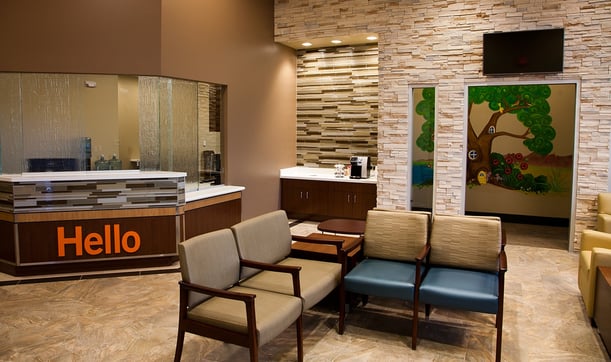
Advancing Technology
Both the pressure to reduce the cost of healthcare and the surge in medical technologies will fundamentally change what we build, where we build it, and how big it is. Technologies such as telemedicine, remote monitoring of patients, and the promise of "big data,” will impact the number of times a patient must physically come to a MOB for a visit. Lives are already being saved through telemedicine robots in our own hospitals by remotely and immediately connecting the right specialist to the patient in need.
The Power of Healthcare Real Estate Leaders
And finally, the professionals that work in healthcare will have a significant effect on its future. Built environments will be designed and constructed by professionals who are lifelong learners, who understand where healthcare is going and are willing to change along with it. Healthcare real estate professionals have never been in a better position to help influence medical outcomes for the patients and populations we serve.”
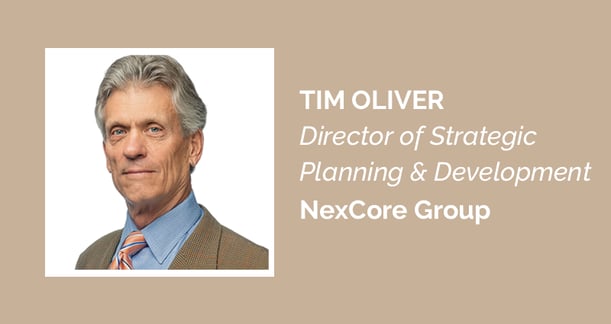
Tim Oliver, Director of Strategic Planning & Development, NexCore Group
- Tech innovation: telemedicine, hybrid operating rooms, digital imaging and more
- Consumerism & payment reform will make the biggest impact on health facilities
- Patients are demanding value innovation and convenience
- Distributed outpatient networks are essential
- A huge investment in facility infrastructure is needed
New Design Driven by Tech Innovation
Technological innovations will significantly impact facility design in the next 10-20 years. Some of these innovations include telemedicine, gene mapping, customized drug regimes, patient devices that can collect and transmit data to providers (mHealth), hybrid operating rooms, electronic patient records, and digital imaging.
Impact of Healthcare Reform
However, the effect of technological innovations on healthcare facilities pales in comparison to the impact of consumerism and healthcare reform (specifically, payment reform). Patients are increasingly being forced to pay for more of their healthcare with higher deductibles and higher co-pays. As a result, patients are demanding value innovation: they want convenient, transparent, affordable, and high-quality service, conveniently located near their most frequently visited places.
Patient Demands are Growing
Patient satisfaction will become part of the equation in calculating provider reimbursement, and patients want access to care close to home, which is driving the need for providers to develop distributed outpatient networks. Healthcare cost concerns are pushing the shift to outpatient facilities from inpatient settings, and new technology is enabling more care to be delivered in outpatient facilities, but the older outpatient facilities are becoming functionally obsolete.
Facilities of the Future
Healthcare facilities are increasingly providing a comprehensive care package (patient-centered medical home concepts) and a one-stop array of outpatient services and specialty physicians. Facilities also need to be optimally distributed across large service areas to provide healthcare systems leverage in contractual negotiations.
Finally, facilities must be re-configured to promote efficiency, throughput, and productivity, and to lower cost per encounter, without compromising patient satisfaction or quality of care. The process of developing such facilities is similar to producing necessary infrastructure such as roads, utilities, fire and safety services, phone systems, and cable TV — healthcare systems will need a similar investment in facility infrastructure over the next 10 to 20 years, and even beyond to address population growth.
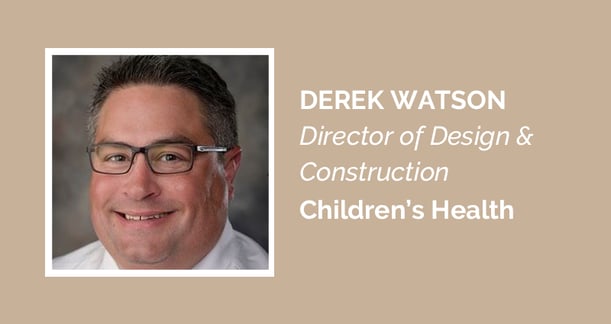
Derek Watson, Director of Design & Construction at Children’s Health
- Telemedicine will advance to better serve patients
- Wearables present a huge opportunity
- Aging workforce will continue to plague facilities
- Microhospitals won’t replace traditional ones
Telehealth Will Take Off
Telehealth is rapidly advancing to improve and change care delivery. At Children’s Health, we now can remotely check on our patients with diabetes or heart disease on a daily basis. We recently pioneered a piece that goes on top of inhalers, so every time a child uses it we get a signal and it goes to the medical records, creates alerts, and we can talk to the parents about adherence and get real data.
There are so many innovative things happening in the telehealth area all over the world right now; these are the most exciting things for the future of healthcare facilities. We also recently partnered with Parkland Health and UT looking at data and weather to reach asthma patients ahead of time about possibile weather triggers. Wearables are a huge opportunity to reach people before they get ill.
Talent Crisis Will Continue
Even as the role of facilities evolves, we'll still carry the challenge of finding future leaders. We have an aging workforce and a lack of skilled trades among young people, with so many high schoolers pressured to get a college degree rather than consider trade school. Trying to find qualified directors to run all the operations is a huge challenge that seems to be worsening.
Hospitals Aren’t Going Extinct
In 1920 there was an article published that predicted by 1950, there would be no beds in hospitals. It’s an interesting concept but the issue is the acuity level of patients, especially those with chronic conditions, is increasing, plus people are living a lot longer. I have a hard time believing hospitals are going anywhere. The micro-hospital concept has its benefits of course, but again, with the level of acuity, you need the expertise of multi-level specialists that you don’t get in smaller outpatient facilities.
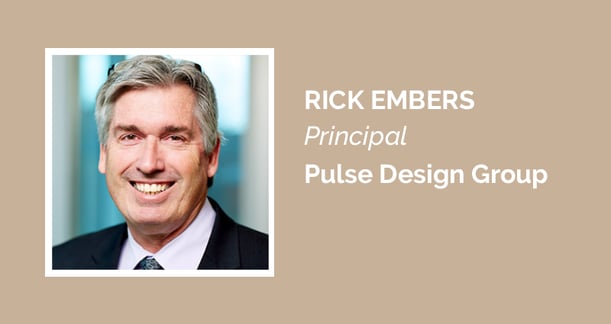
Rick Embers, Principal of Pulse Design Group
- Power & data must have capacity for expansion and adaptation
- Solar power and batteries will see great advancements
- Data requirements will skyrocket
- Telemedicine services will be provided from “mothership” hospitals
- Smart buildings will provide continual feedback to facility management systems
- “Islands” of connected healthcare will emerge
Power & Data Must Be Uninterruptable
Assuming decentralization continues, there is a need for facilities to be capable of responding to the specialized requirements of healthcare both now and in the future. Two critical elements required for almost all healthcare facilities, regardless of location, are power and data. Both must be dependable, uninterruptable, and have the capacity for expansion and adaptation to respond to ever changing technology. If not, facilities are at risk of becoming obsolete long before they reach their typical end of life.
Need for Alternative Energy Sources
The need for dependable power supplies for healthcare facilities has long been recognized within the industry. This will become even more critical as these facilities continue to add the latest power intensive equipment that support automation, robotics, and other systems. Maybe less understood, however, is the potential benefits of incorporating alternative energy sources at these locations to offset rising energy costs in the future thereby helping to improve the overall bottom line of the facility.
While wind and geothermal energy sources may play an important role on a regional basis we see the greatest technological advances in both solar power and energy storage systems (batteries). To this end, we as designers and developers of these facilities need to better anticipate the potential requirements of this future state.
Data Explosion
Over the past decade we have seen an explosion in the data needs for healthcare facilities. From our viewpoint, as healthcare architects, this fact has expressed itself in designing more and larger IT closets, providing larger fiber service to (and within) buildings, and even replacing outdated first generation data cabling with the latest technology. Future growth in data requirements will remain explosive, partially fueled by the incorporation of EMR systems and telemedicine supplied digitally from “mothership” hospitals to decentralized providers.
Even the transition to cloud based storage/computing technologies has added additional burden to the overall data infrastructure. And, to complicate matters even more, these systems must also be uninterruptable and redundant often meaning some type of satellite or antenna based backup ISP system should the fiber lines get cut or compromised.
“Islands” of Connected Healthcare
So, what does all this mean for the future of healthcare facilities? Most likely we’ll see an increase of community-based “islands” of connected facilities. They will be specifically designed to support the overall health system while operating independently for extended periods of time during emergency power/data outages.
These facilities will potentially house technologically advanced equipment such as automation systems that support pharmacies and core lab functions, robotics utilized for surgery and imaging, in addition to being “smart” buildings that automatically respond to current interior/exterior environmental conditions.
Integrated Buildings are the Future
Buildings of the future will not only incorporate the traditional systems that provide lighting, HVAC, and life safety, but they will connect these systems in an integrated and dynamic way. In the purest sense, these buildings will provide continual feedback to facility management systems that will minimize energy usage while ensuring patient/staff comfort.
It will also expand into other elements of the facility, such as intuitive signage systems that assist wayfinding, filters and light fixtures that automatically order replacements, electrical outlets that “know” their circuitry, amperage, power usage, and perhaps even provide integrated responses to specific events (i.e. increase lights and cooling to patient room when code blue button is activated). The final vision is a building infrastructure that is actively supportive of the patient healing process.
Despite the diversity of our real estate & facilities execs, a few key trends emerged in our conversations about the future of healthcare facilities, including:
- The rise of retail clinics and demand for convenience
- A shift from inpatient to outpatient settings
- Telemedicine's disruptive potential
- Tech innovation's impact on design & enhanced patient experience
We last spoke to thought leader Joe Powell for his unique perspective as the Executive Director of the Academy for Healthcare Infrastructure, a program of D.C.'s University Research Institute.
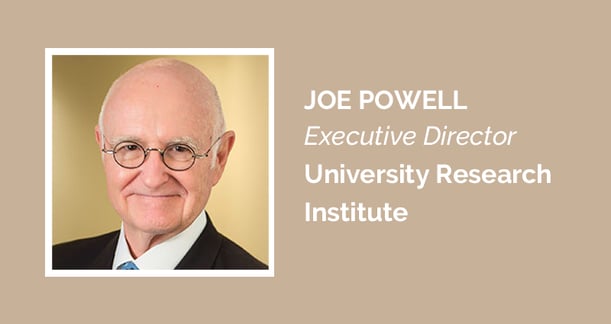
Powell believes that the "role" of the built environment is not evolving per se, but the techniques certainly are.
"The role of healthcare facilities will always be the same: to facilitate the execution of the care delivery & business models in effect at any given time."
"A critically important concept that facilities leaders must keep in mind: it’s not about buildings. It’s about the role our buildings play in delivering care and surviving as a business. Healthcare system owners see this issue in a variety of ways: Some think the purpose of buildings is to keep the rain off their employees heads, others see the built environment as being a critical element in the healing process and the efficiency with which that occurs."
Powell's final words? "My wish for facilities professionals: learn more about the care delivery and business strategy aspirations of your owners. You have an important role.
My wish for the owners: involve your building professionals on a strategic level. The built environment can be not only a real estate asset, but an efficiency and effectiveness asset."

Posted by
Collaborate with your Peers!
HealthSpaces is a community for people that plan, design, build and operate spaces where healthcare is delivered.
June 7-9, 2026 | Braselton, GA
Learn More


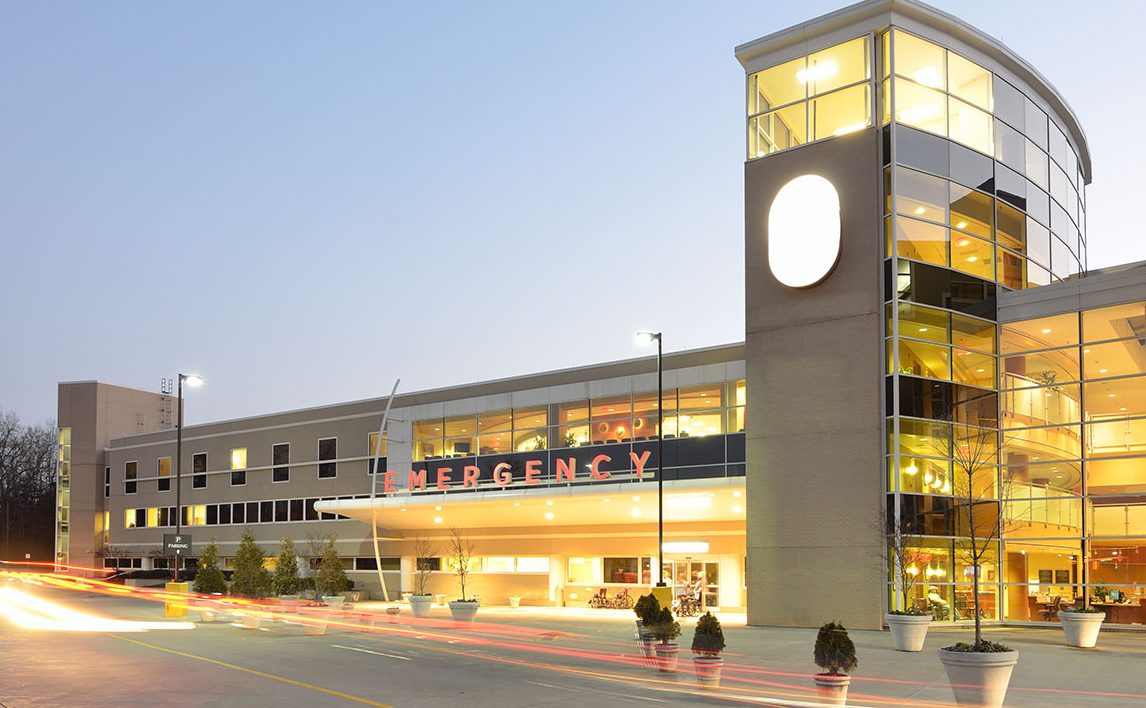

-4.png)
-Dec-09-2025-05-48-44-4379-PM.png)
-4.png)
-1.png)
-2.png)

Comments